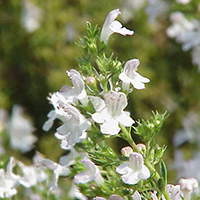Bio-organic and inorganic fertilizers modify leaf nutrients, essential oil properties, and antioxidant capacity in medic savory (Satureja macrantha L.)

Accepted: November 28, 2019
All claims expressed in this article are solely those of the authors and do not necessarily represent those of their affiliated organizations, or those of the publisher, the editors and the reviewers. Any product that may be evaluated in this article or claim that may be made by its manufacturer is not guaranteed or endorsed by the publisher.
The present study was carried out to assess the effects of bio-organic and inorganic fertilizers on plant nutrients, essential oil composition and antioxidant capacity of Satureja macrantha L. The experiment included nine treatments viz., NPK (50:25:25 kg ha−1), Vermicompost (VC) (5 t ha–1), NPK +VC, Thiobacillus (T), T+VC, T+sulfur (S) (250 kg ha−1), T+S 500 kg ha−1, Glomus mosseae, and control (untreated plants). The results showed the highest Essential Oil (EO) content and yield were respectively observed in plants treated with the combination of VC and NPK. Total Phenol Content (TPC) in first-year plants treated with VC and second-year plants under NPK+VC were higher than other experimental plants. Total Flavonoid Content (TFC) in second-year plants under the combination of NPK was greater than other plants. N content in first year plants treated with NPK fertilizer / combination of NPK and VC was higher compared to other experimental plants. The highest P content was observed in the NPK application in first year. Gas Chromatography—Mass Spectrometry (GC/MS) analyses revealed that the main constitutes of S. macrantha EO were p- Cymene (16.30-34.64%), γ-terpinene (15.46-33.6%), and Thymol (14.82-43.09%), which had different responses to sampling time and fertilizer treatments.
PAGEPress has chosen to apply the Creative Commons Attribution NonCommercial 4.0 International License (CC BY-NC 4.0) to all manuscripts to be published.


 https://doi.org/10.4081/jbr.2020.8477
https://doi.org/10.4081/jbr.2020.8477



